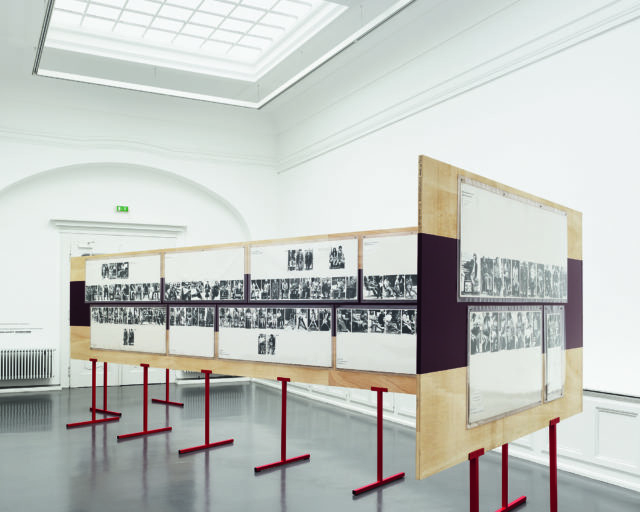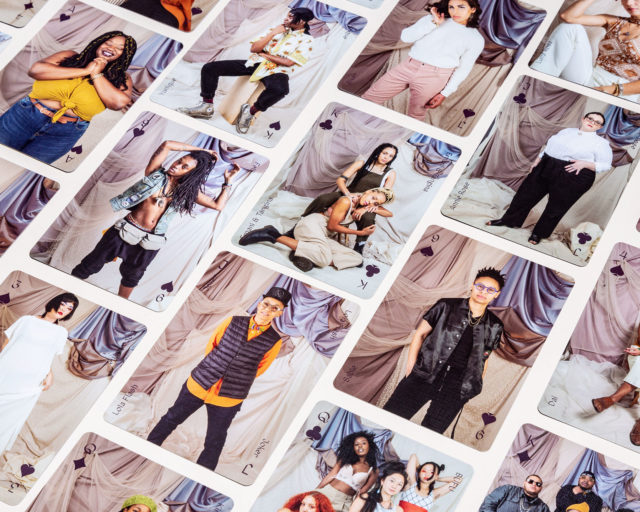15 Photographers on How Imagination Shapes Their Work
How can photographs influence the social and artistic imagination? Documentary photographs take a fraction of time and suspend it—such as Dawoud Bey’s intimate moments of togetherness in the African American community, or Richard Misrach’s haunting images of California’s recently smoke-filled skies. Meanwhile, artists such as Shen Wei and Chanell Stone use staged self-portraiture to explore concepts of identity, body and landscape, and past and present.
Works of Imagination, the Magnum Square Print Sale in partnership with Aperture, brings together over one hundred images by an international group of photographers. As we near the end of a year unparalleled in recent memory, this collection of prints features works that reflect on the different ways that photographers imagine the world.
Through Sunday, October 25, you can collect these signed and estate-stamped, 6-by-6 inch, museum-quality images for $100 each. When you purchase through this link, you directly support not only the artists, but also Aperture’s programming, publishing, and operations.
Selected by Aperture’s editors, here are fifteen highlights from this year’s Magnum Square Print Sale in partnership with Aperture.
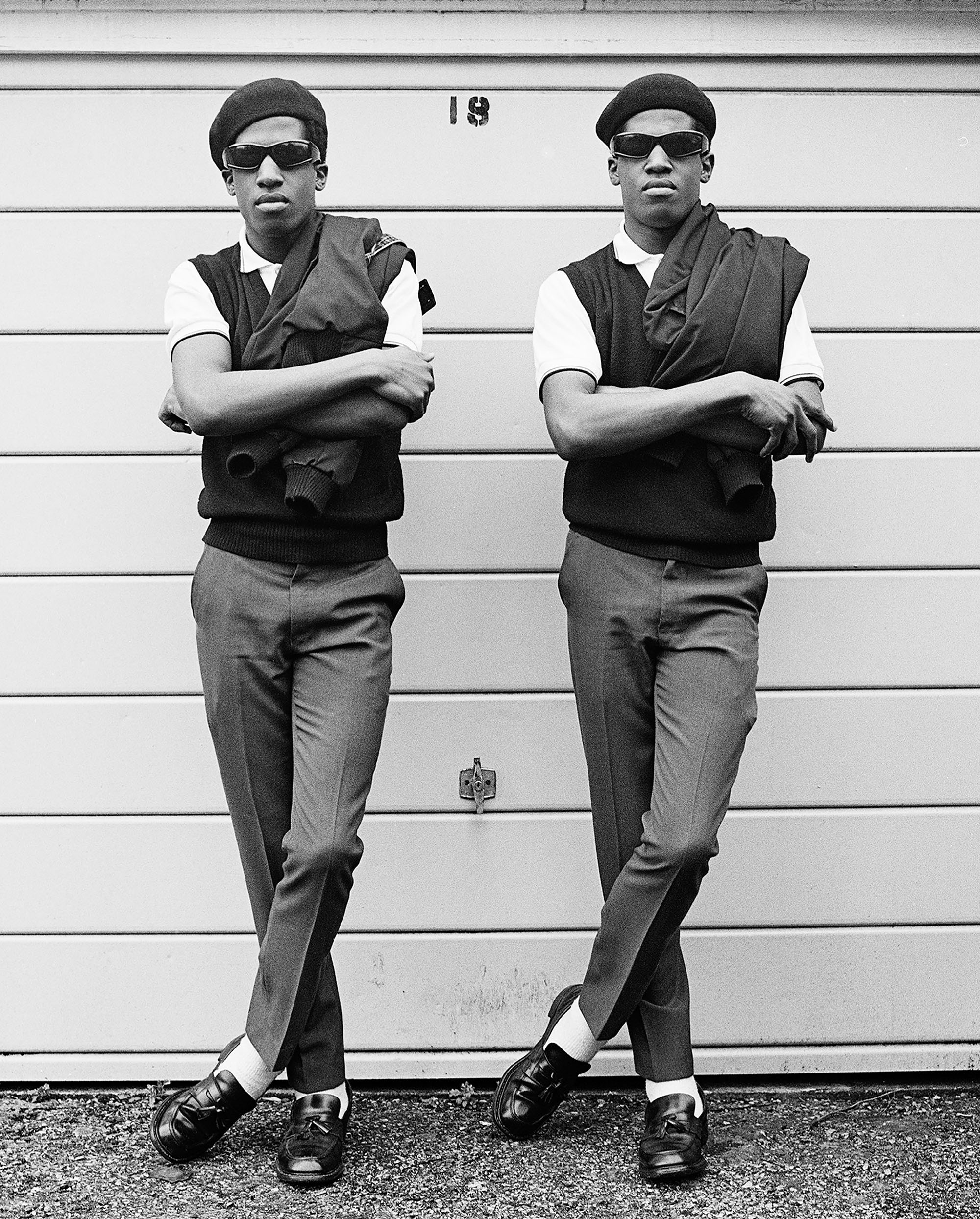
Courtesy the artist
Janette Beckman
“In London in the 1980s, the Islington Twins (Chuka and Dubem Okonkwo) would meet every evening at rush hour at ‘The Bar’ with a crowd of teenage followers. ‘The Bar’ didn’t serve food or drink; there was no jukebox or seating. It was just a horizontal pole that stopped cars from entering the road to the local Highbury & Islington Tube station. Always identically and impeccably dressed, the twins played music by bands like Madness, The Specials, and Bad Manners on their boombox, and talked to the commuters and to their friends. They received a small college grant and bought pork pie hats, Crombie overcoats, Sta-Prest trousers, and loafers from a shop in East London. For them, being a mod was more than just clothes. It was the way you conducted yourself and behaved toward others. Chuka said: ‘People began to stop us in the street and ask if they could take our photographs. We had to have the photographers in our fantasy, as it was only when other people noticed us that we would really believe that we looked the way we did.’” —Janette Beckman

Courtesy the artist
Dawoud Bey
“Photographs are nominally related to life as we know it, even as they are clearly not life itself. In the best cases, a photograph can elevate the experience of mundane everyday circumstance and transform it into an entirely new experience that both acknowledges and transcends what was there.” —Dawoud Bey

Courtesy the artist/Magnum Photos
Matt Black
“Pictures are facts that can overcome the fictions we are told or that we sometimes tell ourselves. Even when they are about things just beyond sight, they can help us to understand our world and our place in it.” —Matt Black
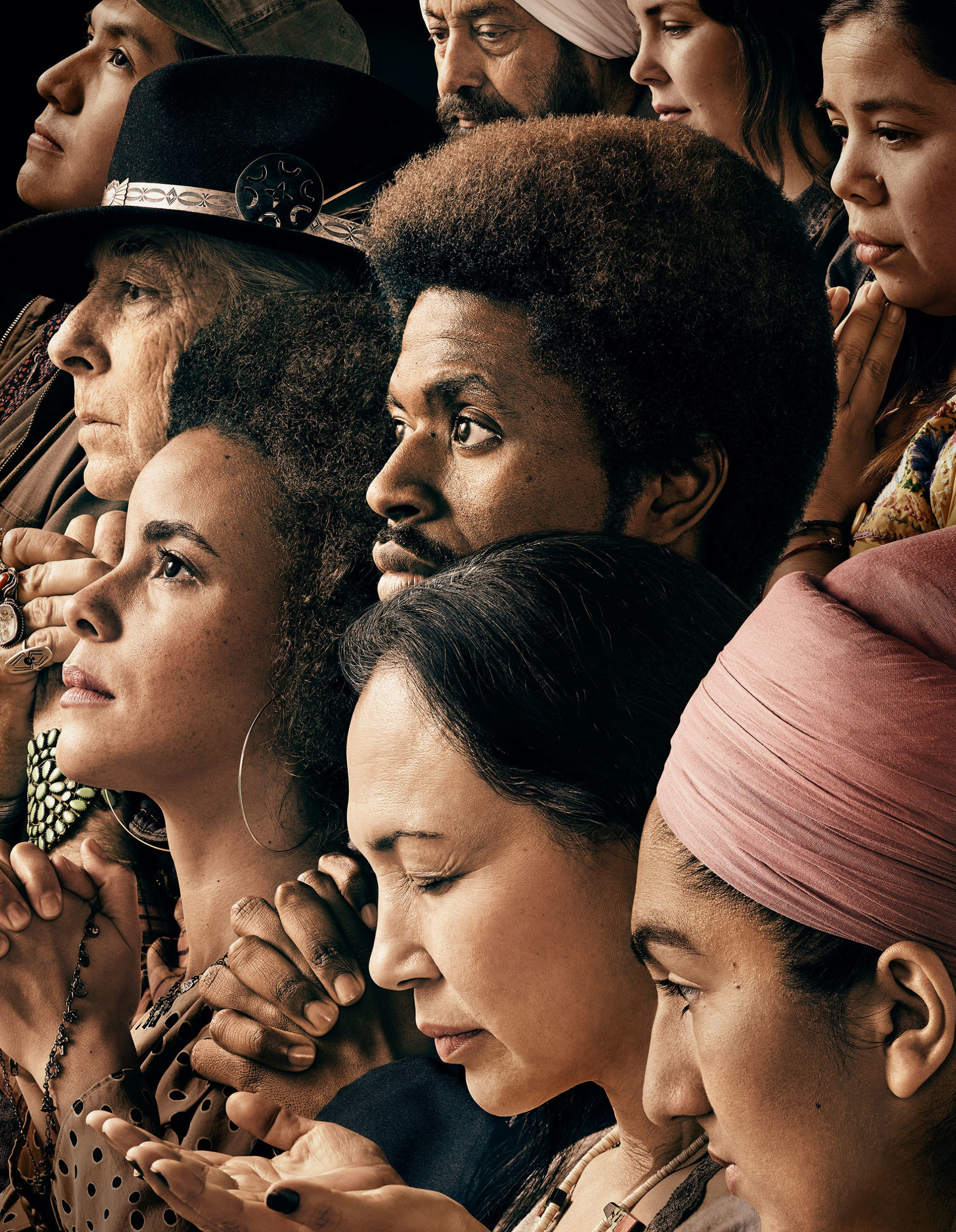
Courtesy For Freedoms
For Freedoms
“In 1943, Norman Rockwell visualized the four freedoms, articulated by President Franklin D. Roosevelt in 1941, central to American identity—freedom of speech, freedom of worship, freedom from want, and freedom from fear. But his paintings, while poignant, left out the richness, diversity, and reality of American life.
This recreation by the artist collective For Freedoms updates Rockwell’s original illustration of the freedom of worship. The work is distinctly American in its inclusion of Indigenous people, immigrants, individuals of different faiths, and those of diverse ethnicities. Their collective reverence, despite different styles of prayer, imagines a nation where not only does worship mean many things, it is also not something to hide.” —Hank Willis Thomas, Emily Shur, Eric Gottesman, and Wyatt Gallery of For Freedoms

Courtesy the artist
Nan Goldin
“The trans rights movement has been a crucial part of the ongoing street protests. I feel lucky to have lived long enough to have witnessed this sea change in visibility and acceptance of trans people in our culture. In the early ’90s, I traveled to Bangkok to photograph the world of queens known as ‘ladyboys.’ Second Tip was their home and sanctuary. Every week, they held lavishly produced beauty contests, wearing showgirl costumes and lip-synching to Madonna. I wonder how today’s movement would have affected their lives.” —Nan Goldin
Proceeds from the sale of this print will benefit P.A.I.N. (Prescription Addiction Intervention Now)
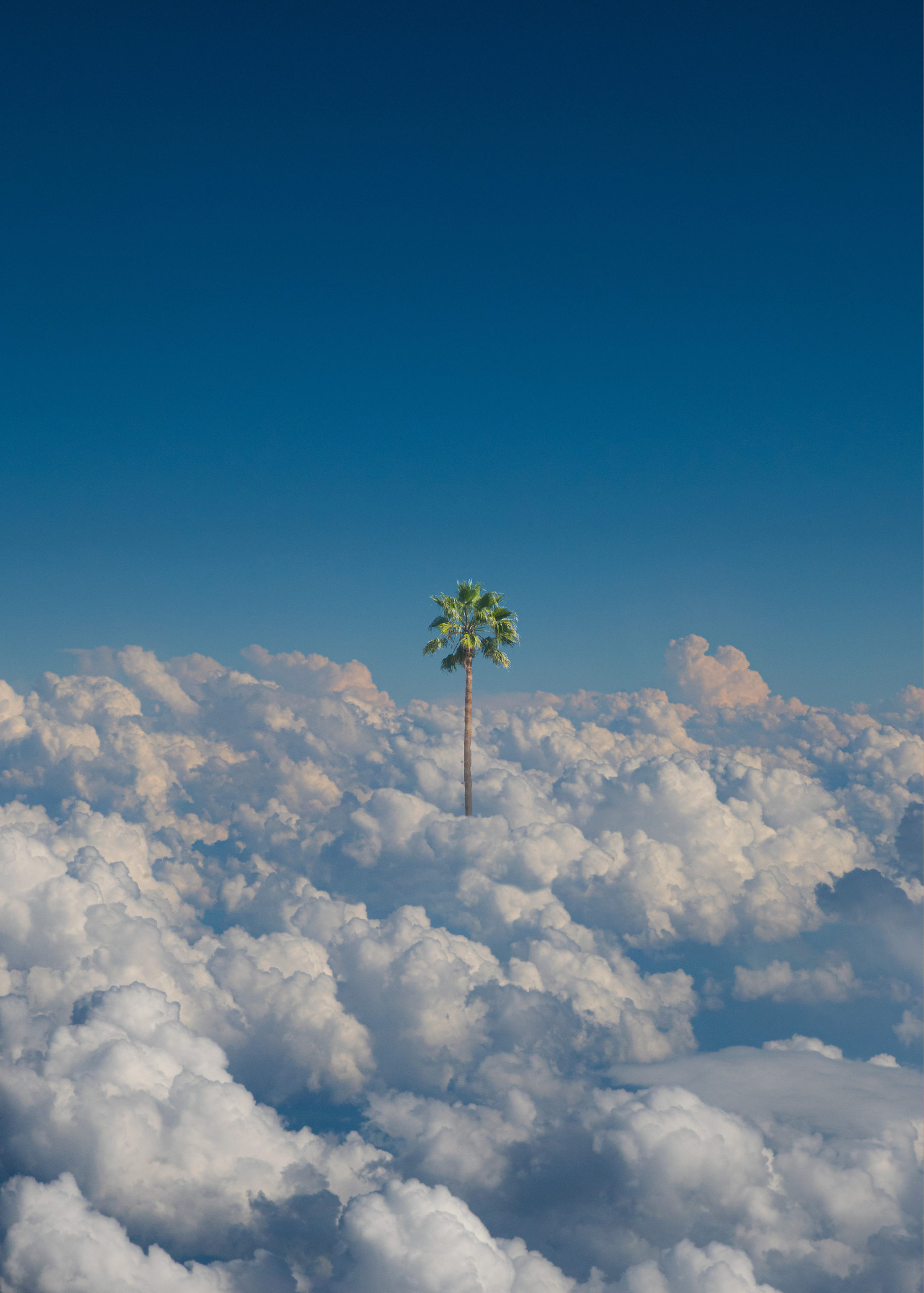
Courtesy the artist
KangHee Kim
“Street Errands is a series of collaged photographs that mix street scenes from New York and other parts of the US. They start from mundane encounters on everyday errands in New York, and by manipulating these images, I construct my own form of surreal escapism. I cannot travel abroad due to my visa status, so I build layers of photos or modify the original photographs to create new spaces. The manipulation of these scenes introduces infinite possibility, free from the limits or restraints of real life.
I think of these collages as paintings, and I show the post-production process as a way of showing mark-making. I aim to achieve perfection by rediscovering the possibility of merging two or more images, finding their spark, but I leave flaws in my photographs. Small imperfections are human; they are what make people attractive.” —KangHee Kim
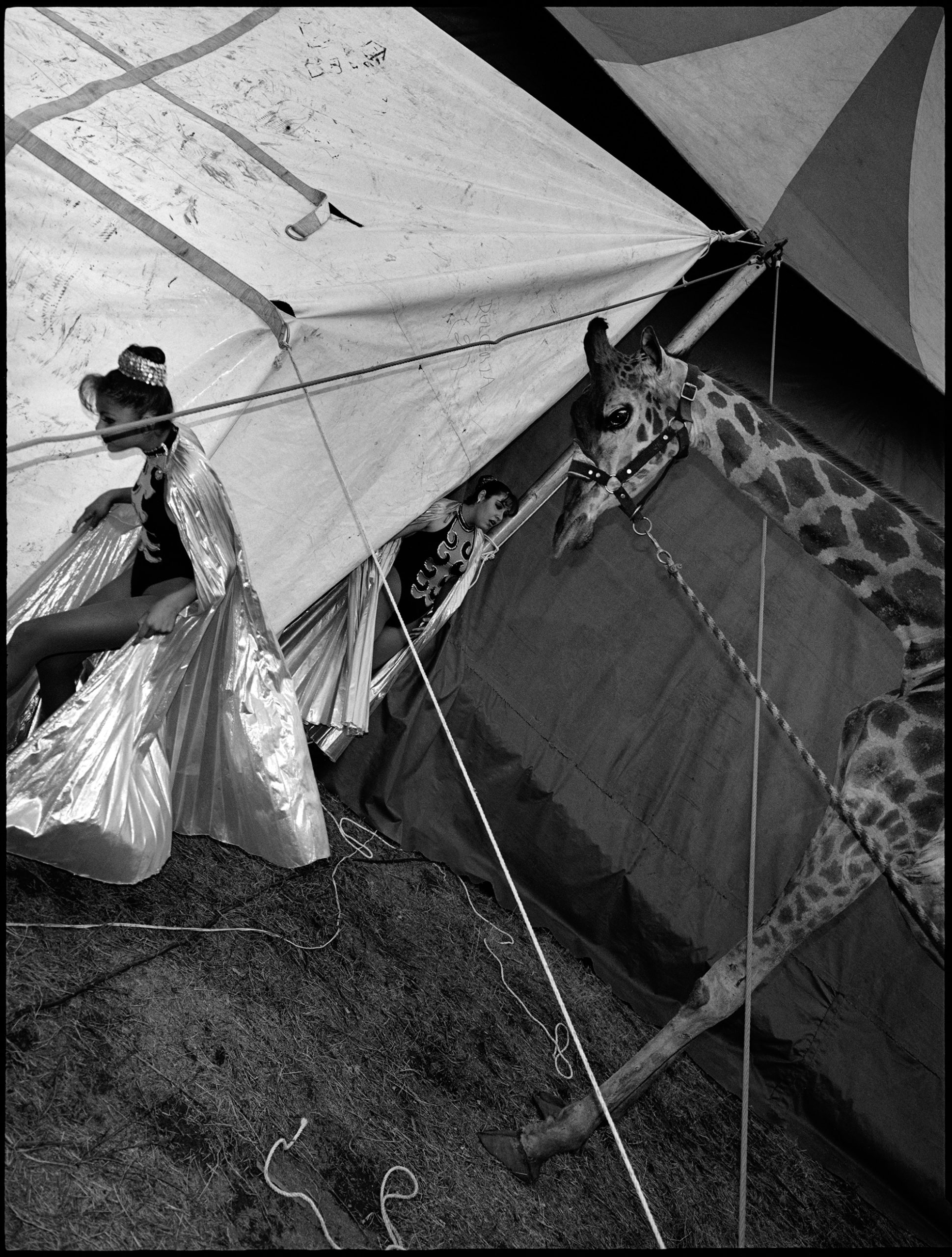
Courtesy the artist
Mary Ellen Mark
“The circus is a universal form of theater and a metaphor for everything that has always fascinated me visually. It is full of ironies, often humorous and sometimes sad, beautiful and ugly, loving and at times cruel, but always human.” —Mary Ellen Mark

Courtesy the artist
Diana Markosian
“I was seven when my family arrived in America. The year was 1996. The Soviet Union had long collapsed, and by then, so had my parents’ marriage. In the evenings, in our tiny Moscow apartment, my family would watch Santa Barbara, the first American show broadcast on Russian state television. For my mom, Santa Barbara represented a dream. One night, she woke me up, and said we were going on a trip. We left without saying goodbye to my father, and the next day landed in a new world: America.” —Diana Markosian
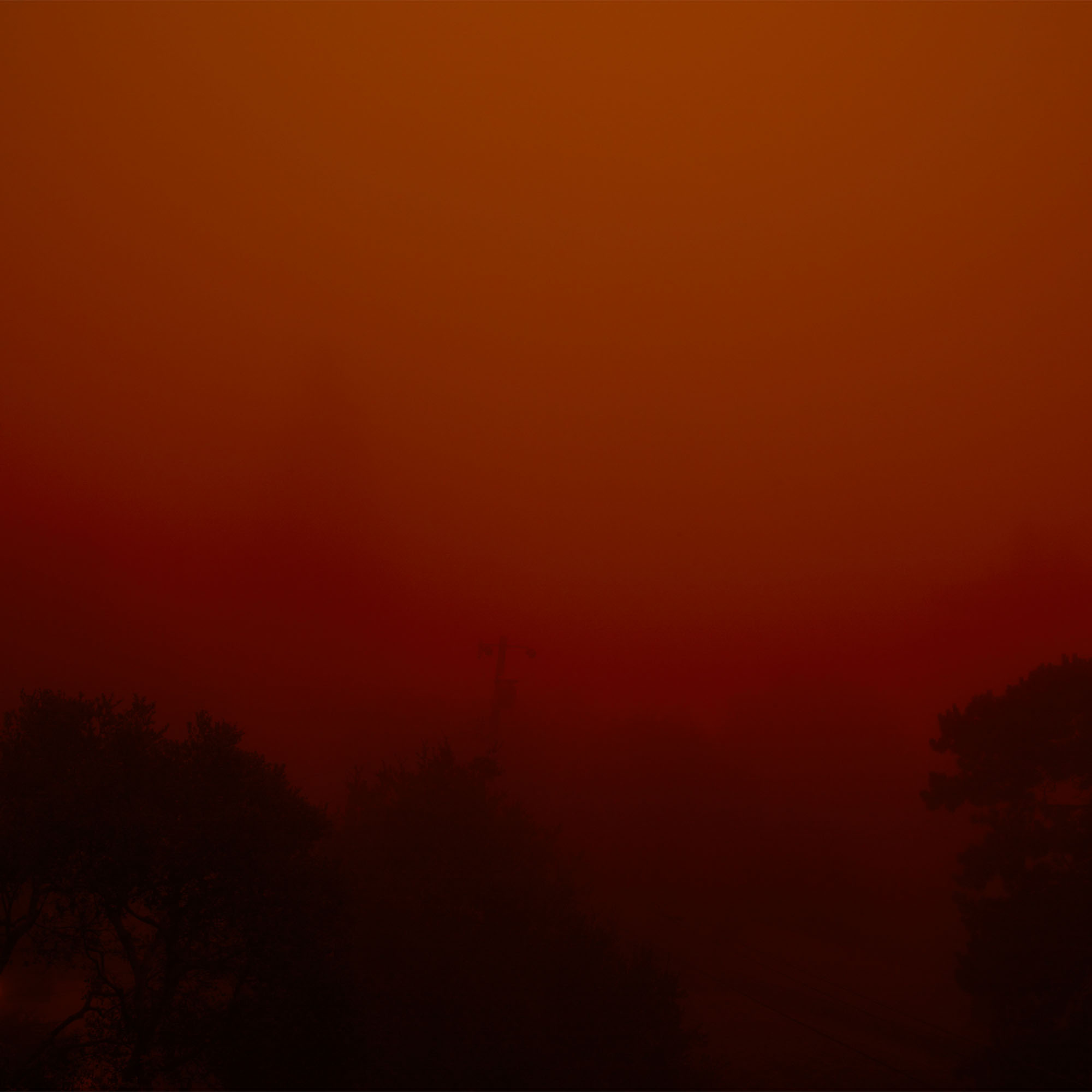
Courtesy the artist, Pace Gallery (New York), Fraenkel Gallery (San Francisco), and Marc Selwyn Fine Art (Los Angeles)
Richard Misrach
“In the past, I have been able to photograph the glorious skies and views of the San Francisco Bay and Golden Gate Bridge from my deck. During the recent spate of fires, beginning in August, I have been confined to my home, and the photographs I make are taken from the same spot as the earlier series, but as dense smoke renders the Golden Gate invisible, I have focused on my more immediate surroundings. There were days when the smoke created day for night, post-apocalyptic views right out of a sci-fi Hollywood movie. The most obvious and undeniable culprit here is climate change, whose impacts are increasing at an exponential rate. The future has arrived.
In an interview given in her last years, Dorothea Lange beckoned the next generation of photographers to document civilization’s advancing effects on California, framing it as the New California. She couldn’t have anticipated climate change, but she was worried about the detrimental consequences of settlement and growth. This series is dedicated to her remarkable foresight.” —Richard Misrach
The photographer’s proceeds from the sale of this print will benefit Aperture

Courtesy the artist
Rebecca Norris Webb
“Over the years, I’ve learned to trust images I’m drawn to in the world. In times of uncertainty and unsettling emotions, these resonant images seem like advance dispatches from the interior of the self. They know before I know. The day I made this photograph, I was heavyhearted. My beloved father-in-law was dying, and I wanted to be at his bedside. Unable to fly home for a day, I reluctantly decided to photograph. Half in a daze, I remember climbing a flight of rickety stairs to a Havana rooftop. A young man greeted me, a pigeon fancier in his late twenties. ‘I almost died,’ he softly confided to me, ‘and my birds brought me back to life.’ Kneeling on the coop’s floor, I noticed a pigeon opening its wings. I lifted the camera to my eye.” —Rebecca Norris Webb

Courtesy the artist
Lise Sarfati
“This is a photograph from my Austin, Texas series, a fashion series created for a magazine and an exhibition at the Maison Rouge in Paris. I don’t normally work with fashion, but I accepted the commission to challenge myself to make the clothes disappear for the benefit of the ‘character.’ I made this series with the idea of a sequence in the life of each of the girls I photographed, which mixed exterior and interior in the idea of the ‘everyday.’ Each girl I chose had an off-beat presence in the world. The accumulation of the series made me think of short novels, and the fashion magazine had a literary approach. The more realistic a context is, the more fictional it becomes.” —Lise Sarfati
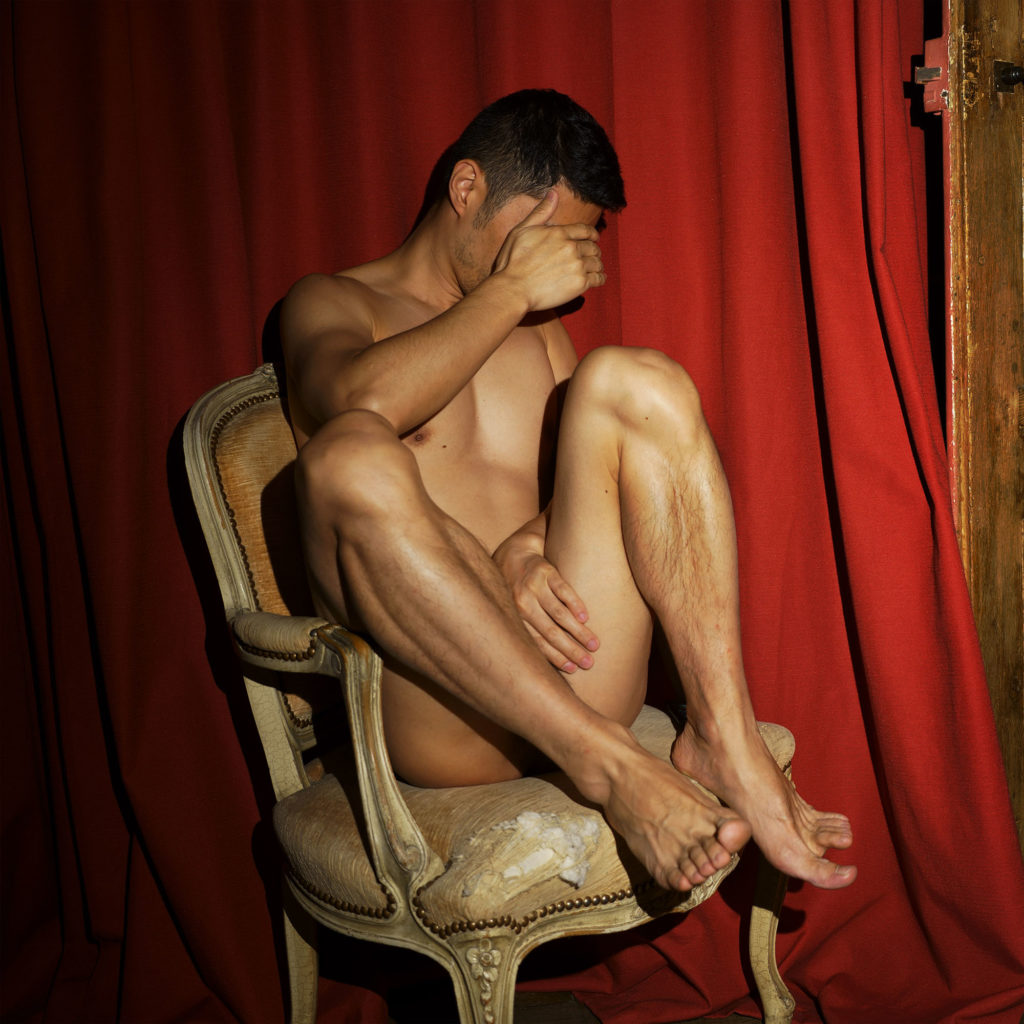
Courtesy the artist
Shen Wei
“When creating a self-portrait, I often transform into a different persona. I’m usually naked, so it’s not about putting on a costume. Somehow, I find myself responding to the environment I’m in, sensing the past and future of that place as I perceive it.” —Shen Wei
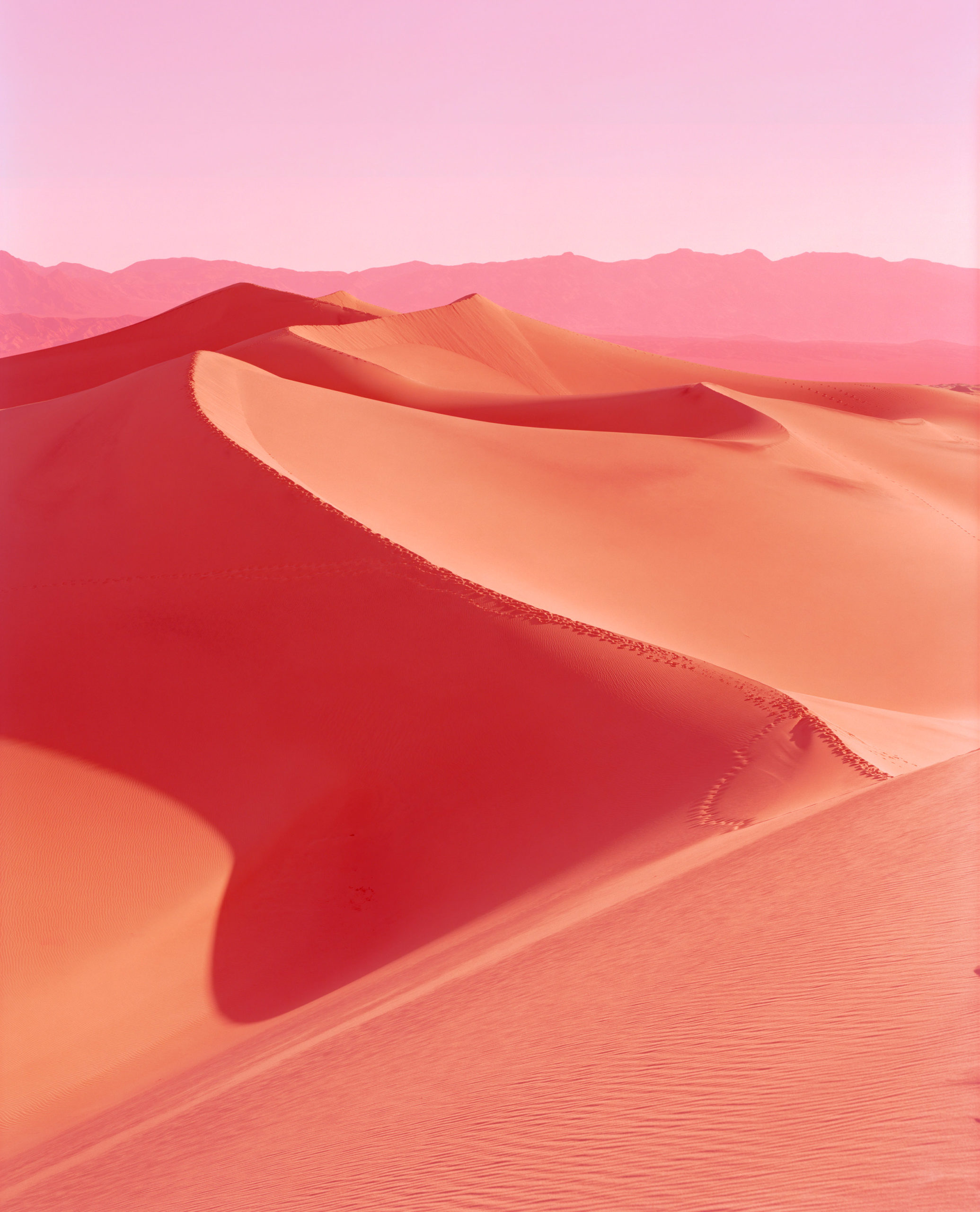
Courtesy the artist
David Benjamin Sherry
“In the last decade, I’ve traveled and photographed extensively throughout the Western National Forests and National Parks. In doing so, I’ve revisited famous Western landscapes seen in the historic photographs of Carleton Watkins, Eadweard Muybridge, William Henry Jackson, and Ansel Adams. I discovered that many of these iconic landscapes—so crucial to our collective understanding of the American West—were deteriorating, affected by human interference. The pictures I took, which began as an homage to the legacy of grand Western landscape photography, evolved into an opportunity to build on it.
Like my forebears, I use an 8-by-10-inch large-format film camera, which allows for an unrivaled level of detail. However, when printing this series, I’m not interested in depicting the way the landscape appears in reality, but rather in its potential for emotional resonance. For me, color is a conduit to making those feelings visible, beginning a radical, queer new chapter to the otherwise colonial, heteronormative history of the medium.” —David Benjamin Sherry

Courtesy the artist/Magnum Photos
Lindokuhle Sobekwa
“This work is from a series about my sister, Ziyanda. I began this project after finding a family portrait in which her face had been cut out. She was a secretive, rebellious, and rough presence in my life. The day she disappeared, she was chasing me, and I was hit by a car. She only returned a decade later, suffering from illness. By that time, I had become a photographer and realized my family had no pictures of her. One day I saw this beautiful light coming in through the window, shining on her face. I lifted up the camera to catch the moment and she shot me an evil look and said, ‘Stop! If you take that picture, I’m going to kill you!’ So I lowered my camera. I still wish I had taken the shot.” —Lindokuhle Sobekwa
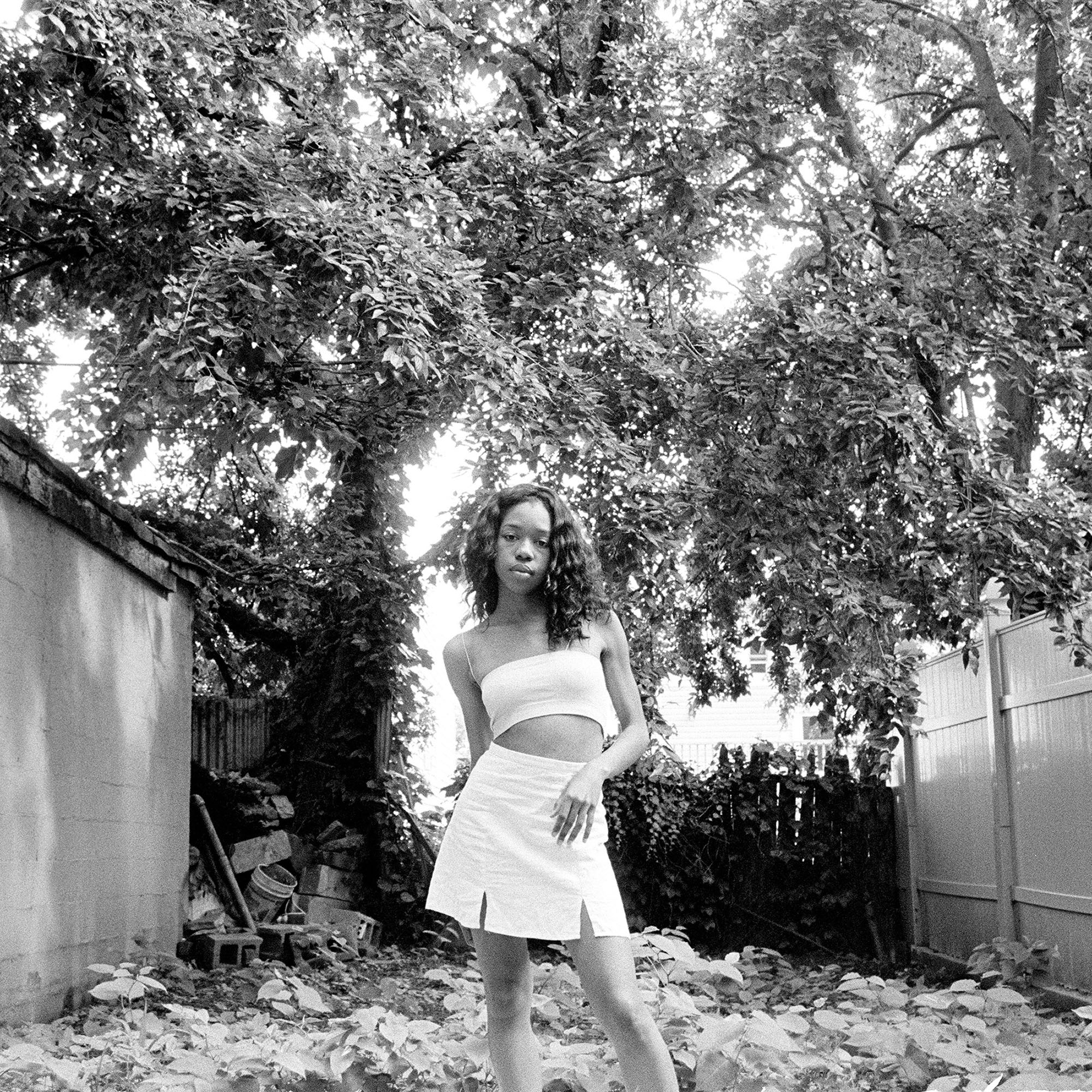
Courtesy the artist
Chanell Stone
“Garden Glow is derived from my series Natura Negra, in which I explore the Black body’s relationship to the American landscape, with a special emphasis on urban nature. Using myself as a conduit, I create verdant self-portraits to convey both personal and collective narratives of urbanized Black people. Inner-city gardens and canopies operate as sites for connection and the ‘re-naturing’ of the Black body to the natural world.” —Chanell Stone
The Magnum Square Print Sale in partnership with Aperture is available from October 19 through Sunday, October 25 at 6 p.m. ET. For one week only, collect signed and estate-stamped, 6-by-6 inch, museum-quality prints for $100 each. By using this link to make your purchase, you directly help support not only the artists but also Aperture’s programming, publishing, and operations.










